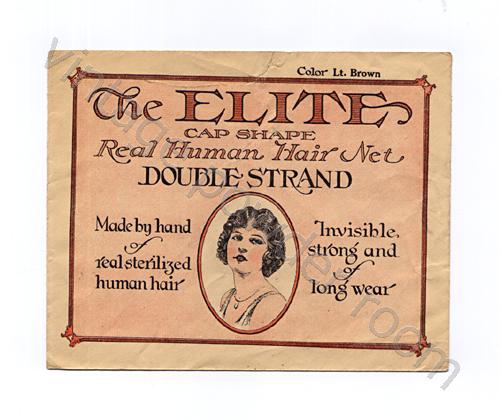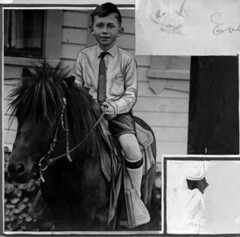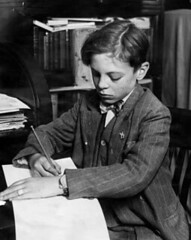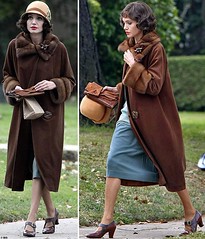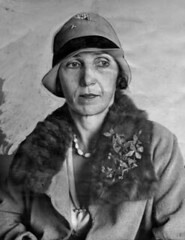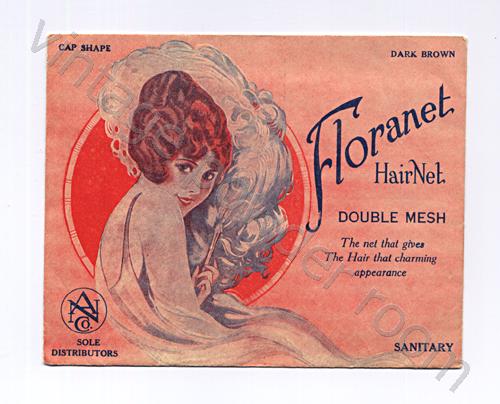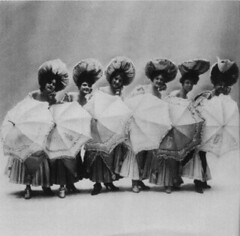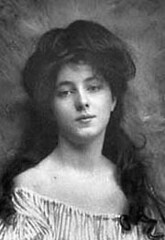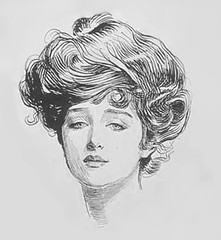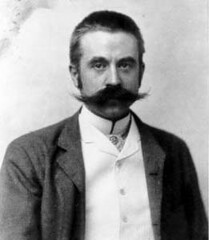Wed 1 Sep, 2010
CARMEN
Comments (0) Filed under: Hair Net PackagesTags: Brazil, Carmen, Carmen Miranda, Georges Bizet, Jimmy Durante, KISS, opera, platform shoes, Rio de Janiero
Could the woman on the hairnet envelope be anyone other than Carmen, the fiery temptress and faithless lover in Georges Bizet’s opera?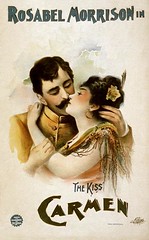
In the first act Carmen, a cigarette factory worker, seduces a young solider by tossing a flower at his feet. Really? Clearly it didn’t take too much to capture Don Jose’s attention, or his love.
By the end of the last act Carmen had dragged Don Jose’s reputation, and his heart, through the mud. Of course a woman of Carmen’s volatile temperament could not hitch her wagon to a doormat, so she would jilt Don Jose in favor of Escamillo, a handsome toreador.
 In classic operatic tradition Don Jose doesn’t thank Carmen for the memories and bid her adieu – he picks up a knife and stabs her to death just as Escamillo wins the bullfight. Opera has never been known for its subtle symbolism. And that is precisely why I enjoy opera so much. It never makes a small gesture.
In classic operatic tradition Don Jose doesn’t thank Carmen for the memories and bid her adieu – he picks up a knife and stabs her to death just as Escamillo wins the bullfight. Opera has never been known for its subtle symbolism. And that is precisely why I enjoy opera so much. It never makes a small gesture.
There is something else that has never made a small gesture – platform shoes. They are incapable of restraint.
Apart from rock stars of the 1970s, my favorite wearer of platform shoes would have to be Carmen Miranda. It’s easy to think of her as an opera on two legs. And she did not earn the moniker “Brazilian Bombshell” by being a wallflower. She was bold and brash and so was her footwear.
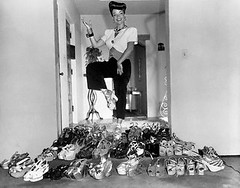 Carmen was born in Varzea da Ovelha, a village in the northern Portuguese municipality of Marco de Canaveses. She was christened Carmen by her father because of his love for Bizet’s masterpiece. His passion for opera influenced all of his children, and especially contributed to Miranda’s love for singing and dancing at an early age.
Carmen was born in Varzea da Ovelha, a village in the northern Portuguese municipality of Marco de Canaveses. She was christened Carmen by her father because of his love for Bizet’s masterpiece. His passion for opera influenced all of his children, and especially contributed to Miranda’s love for singing and dancing at an early age.
Her father may have been a fan of opera, but he did not approve of her plans to enter show business. However, in true operatic fashion her mother supported her and was beaten when her husband discovered Carmen had auditioned for a radio show.
Carmen had previously sung at parties and festivals in Rio. Her older sister Olinda contracted tuberculosis and was sent to Portugal for treatment. Miranda went to work in a tie shop at age 14 to help pay her sister’s medical bills. She next worked in a boutique, where she learned to make hats and opened her own hat business which became profitable. She may never have envisioned just how well the hat making skills would pay off!
 Carmen was very popular in Brazil, but once in the U.S., Carmen’s career (and platforms) hit the ground running. She arrived in 1939 with her band, Bando da Lua. She was presented to Franklin D. Roosevelt at a White House banquet, and went on to star in a baker’s dozen of Hollywood films!
Carmen was very popular in Brazil, but once in the U.S., Carmen’s career (and platforms) hit the ground running. She arrived in 1939 with her band, Bando da Lua. She was presented to Franklin D. Roosevelt at a White House banquet, and went on to star in a baker’s dozen of Hollywood films!
Just eight years later Carmen was the highest-paid entertainer and top female taxpayer in the U.S., earning more than $200,000!
On March 17, 1947 she married movie producer David Sebastian. He was not a successful producer and even more of a disaster when he declared himself Carmen’s manager. In the few months that they lived together as husband and wife he made a series of bad business decisions. He was a boozer, and dragged Carmen along with him. Carmen was a Catholic and would not seek a divorce so she and David were legally married until her death in 1955.
The “lady in the tutti frutti hat” has had a profound influence on popular culture, and her likeness has popped up in everything from cartoons to the character of Chiquita Banana.
On August 4, 1955 while appearing in a live segment of the Jimmy Durante Show, Carmen collapsed. She recovered quickly and resumed her performance not realizing that she’s suffered a heart attack. Her heavy smoking and alcohol consumption, compounded by her use of amphetamines and barbiturates had taken a serious toll on her health.
 Later that night Carmen suffered a second heart attack at her home in Beverly Hills and passed away.
Later that night Carmen suffered a second heart attack at her home in Beverly Hills and passed away.
Honoring her wishes, Carmen’s family had the entertainer’s body flown back to Rio de Janeiro. The Brazilian government declared a period of national mourning and 60,000 people attended a formal ceremony in Rio’s town hall. More than 500,000 people escorted the funeral cortege to her final resting place.
I’ve never had a burning desire to visit Rio de Janeiro, but after finding out that there is a Carmen Miranda Museum there – I may have changed my mind.
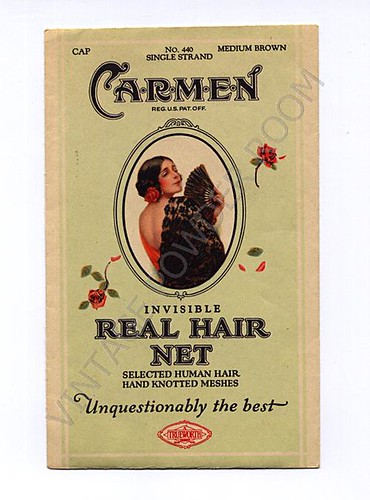



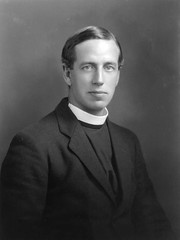
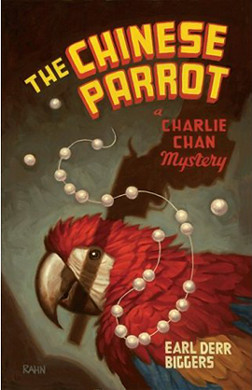
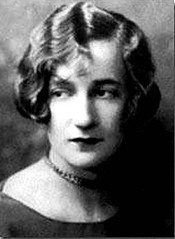
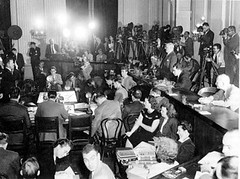
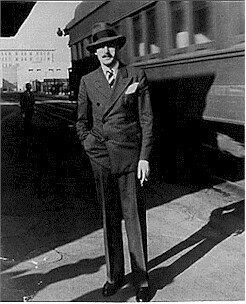
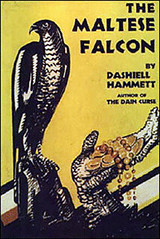

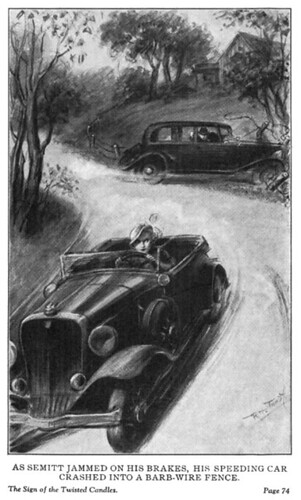
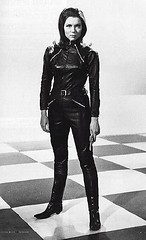


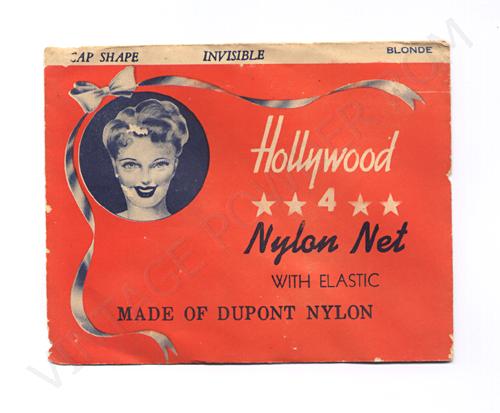

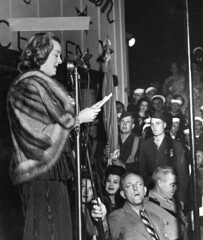 The stars would never shine as brightly as they did when they were doing their bit for servicemen, and women, from all over the globe. The Hollywood Canteen was the war time passion of Bette Davis, John Garfield, and Jules Stein. Miss Davis served as president, and Mr. Stein, President of Music Corporation of America, headed up the finance committee.
The stars would never shine as brightly as they did when they were doing their bit for servicemen, and women, from all over the globe. The Hollywood Canteen was the war time passion of Bette Davis, John Garfield, and Jules Stein. Miss Davis served as president, and Mr. Stein, President of Music Corporation of America, headed up the finance committee.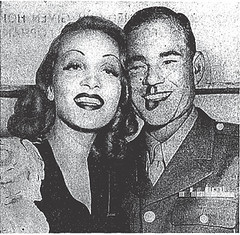
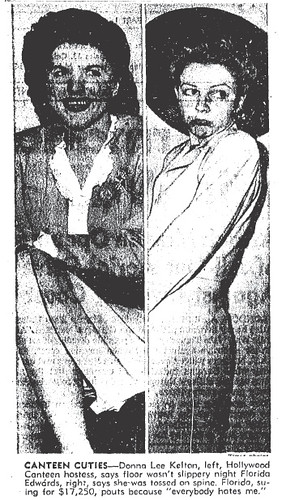 Sometime during the evening of October 31, 1942, an overly enthusiastic Marine grabbed the hand of a hostess lieutenant, Florida Edwards, and began to spin her around the dance floor. Florida yelled for help, but none was forthcoming. The jiving Marine spun his unwilling partner so hard that she became airborne and landed with a crash on her spine on the hard floor. Florida was laid up for a month, and then decided to sue the Canteen for $17,250 in damages. The case would become a battle of the swing experts.
Sometime during the evening of October 31, 1942, an overly enthusiastic Marine grabbed the hand of a hostess lieutenant, Florida Edwards, and began to spin her around the dance floor. Florida yelled for help, but none was forthcoming. The jiving Marine spun his unwilling partner so hard that she became airborne and landed with a crash on her spine on the hard floor. Florida was laid up for a month, and then decided to sue the Canteen for $17,250 in damages. The case would become a battle of the swing experts.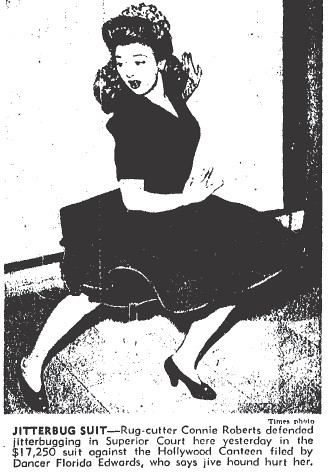 In dispute was how much control a woman had once she had been thrown into a spin. Florida’s friend Luise Walker, floor manager of the Canteen, stated that once a woman was in a spin she was in trouble. Luise compared a spin to a boomerang or “English on a golf ball”.
In dispute was how much control a woman had once she had been thrown into a spin. Florida’s friend Luise Walker, floor manager of the Canteen, stated that once a woman was in a spin she was in trouble. Luise compared a spin to a boomerang or “English on a golf ball”.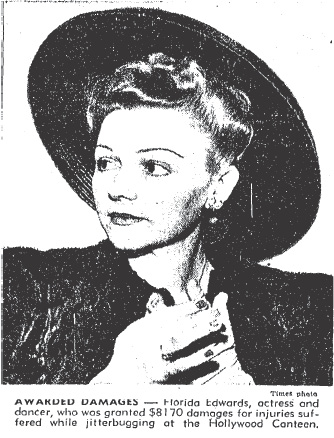

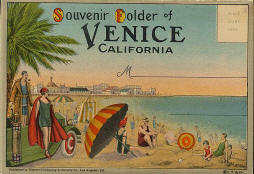
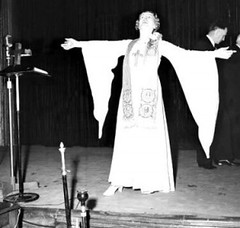
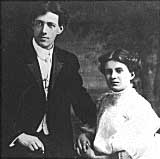
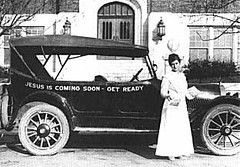
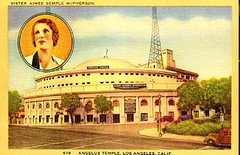
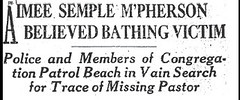 Mourners kept a seaside vigil for their beloved Aimee, but she did not emerge from the sea. Sadly, one parishioner drowned searching for McPherson, and a diver perished from exposure.
Mourners kept a seaside vigil for their beloved Aimee, but she did not emerge from the sea. Sadly, one parishioner drowned searching for McPherson, and a diver perished from exposure.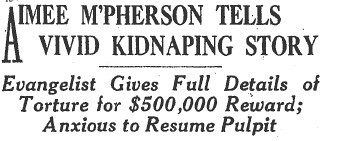 On June 23rd, like a biblical prophet, Aimee staggered out of the desert into a Mexican town just across the border from Douglas, Arizona. Aimee’s story was that she’d been kidnapped, drugged, tortured, and held in a shack until she managed to escape, walking 13 hours to freedom.
On June 23rd, like a biblical prophet, Aimee staggered out of the desert into a Mexican town just across the border from Douglas, Arizona. Aimee’s story was that she’d been kidnapped, drugged, tortured, and held in a shack until she managed to escape, walking 13 hours to freedom.
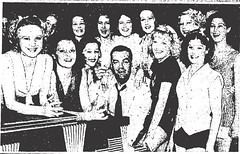
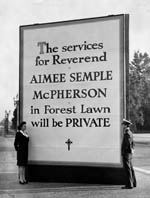 On September 26, 1944 McPherson traveled to Oakland, California for a series of revivals. When her son went to her hotel room at 10 am the next morning to fetch her for her sermon, he found her unconscious. Aimee would die less than two hours later. The coroner was not able to conclusively determine the casue of death. Apparently Aimee had been taking sleeping pills (Seconal) and it is most likely that her death was the result of an accidental overdose.
On September 26, 1944 McPherson traveled to Oakland, California for a series of revivals. When her son went to her hotel room at 10 am the next morning to fetch her for her sermon, he found her unconscious. Aimee would die less than two hours later. The coroner was not able to conclusively determine the casue of death. Apparently Aimee had been taking sleeping pills (Seconal) and it is most likely that her death was the result of an accidental overdose.
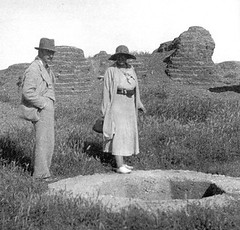

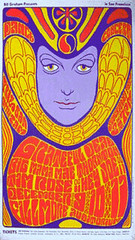 Psychedelic art shared a similar aesthetic with its predecessor.
Psychedelic art shared a similar aesthetic with its predecessor.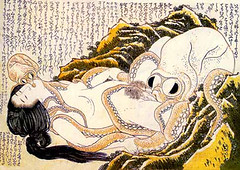
 Even though it was Mucha who produced posters of the “Divine Sarah”, she may have had more in common with Aubrey Beardsley. Both of them were extreme personalities, flamboyant and eccentric. Beardsley expressed himself quite often by donning outlandish garments, and Bernhardt frequently slept in a coffin so that she could “better understand my tragic roles”.
Even though it was Mucha who produced posters of the “Divine Sarah”, she may have had more in common with Aubrey Beardsley. Both of them were extreme personalities, flamboyant and eccentric. Beardsley expressed himself quite often by donning outlandish garments, and Bernhardt frequently slept in a coffin so that she could “better understand my tragic roles”.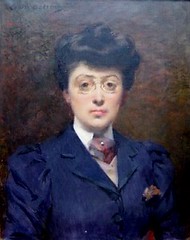

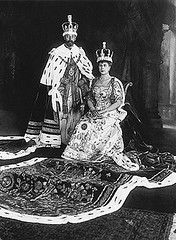


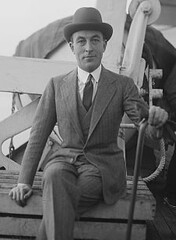

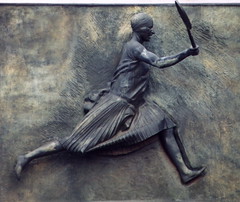 Tragically, her life would be cut short. She was diagnosed with leukemia in June of 1938. Three weeks following a newspaper report of her ailment she went blind. She died at age 39 on July 4, 1938 of pernicious anemia.
Tragically, her life would be cut short. She was diagnosed with leukemia in June of 1938. Three weeks following a newspaper report of her ailment she went blind. She died at age 39 on July 4, 1938 of pernicious anemia.